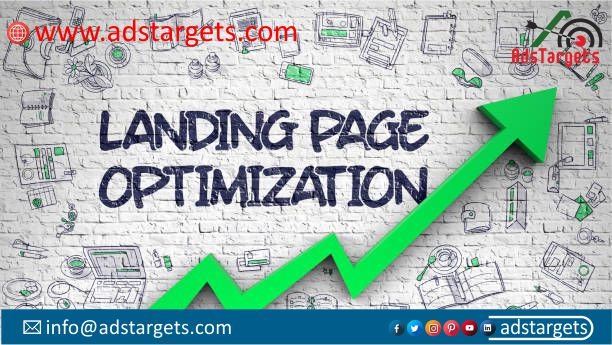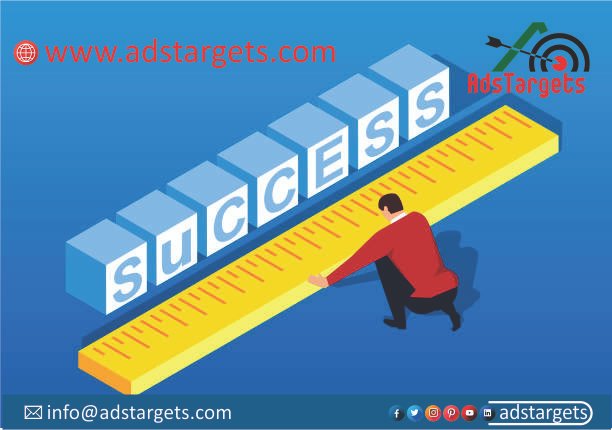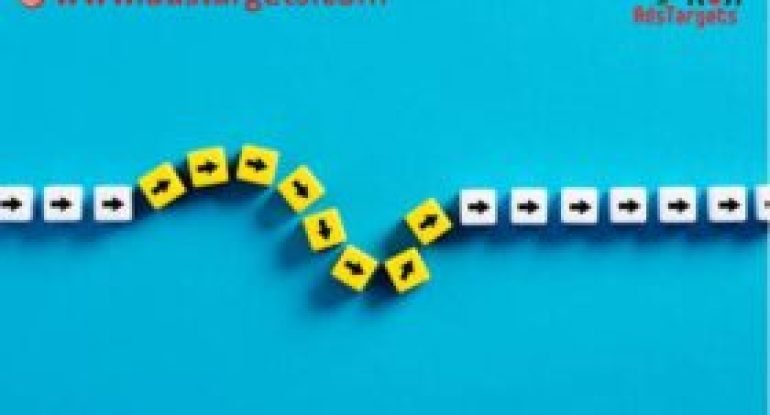Did you know that a well-optimized landing page can increase your conversion rates by over 300%?
Driving traffic to your website is only half the battle in the digital space. The real challenge lies in converting those visitors into customers.
Like a door, a landing page is often the first point of contact between your potential customers and your business, making it an important component of your marketing strategy.
In other words, landing pages are standalone web pages designed specifically to capture leads or drive sales. Unlike regular web pages, which might serve multiple purposes, landing pages are focused on a single objective, making them powerful tools for conversion.
Thus, optimizing landing pages for higher traffic conversions become the real hustle towards maximizing ROI on your marketing efforts.
In this article, we will look at proven strategies for optimizing landing pages to boost your conversion rates.
We will make optimizing landing pages for higher traffic conversions easier than it seems.
From crafting compelling headlines to designing user-friendly layouts, you will discover practical tips to turn your landing pages into powerful conversion tools.
Get ready to transform your landing pages and see a significant uptick in your traffic conversion.
The journey of optimizing landing pages for higher traffic conversions begins with a step. Take the step now and convert every single click on your page to traffic.
Table of Contents
ToggleWhat is Landing Page Optimization?

Landing page optimization (LPO) is the process of improving elements on a website landing page to increase conversions.
A landing page is typically the first page a visitor arrives at after clicking on a link from an advertisement, email, or search engine result.
The primary goal of this page is to persuade visitors to take a specific action, such as signing up for a newsletter, making a purchase, or downloading a resource. This brings us optimizing landing pages for higher traffic conversions.
Benefits of Landing Page Optimization
Landing page optimization offers several benefits that can significantly impact your business’s online performance. Here are some of the key advantages:
#1. Increased Conversions: The primary benefit of landing page optimization is an increase in conversion rates. Tailoring the page to meet the needs and expectations of your visitors can encourage more of them to take the desired action.
#2. Improved User Experience: Optimized landing pages provide a better user experience. This includes faster load times, easy navigation, and relevant content.
A positive user experience can lead to higher satisfaction and an increased likelihood of conversions.
#3. Better SEO Performance: Optimized landing pages are more likely to rank higher in search engine results.
You can enhance your page’s SEO performance, driving more organic traffic by improving elements like load speed, mobile responsiveness, and content quality.
#4. Lower Bounce Rates: A well-optimized landing page can reduce bounce rates. When visitors find your page relevant and engaging, they are more likely to stay and explore further, rather than leaving immediately.
#5. Enhanced Credibility and Trust: Optimization can also boost your brand’s credibility. By providing valuable content, using social proof, and presenting a professional design, you can build trust with your audience, making them more likely to convert.
#6. Data-Driven Decisions: Optimizing your landing pages involves testing different elements to see what works best. This data-driven approach allows you to make informed decisions and continually improve your pages based on real user behaviour.
With such benefits as mentioned above, it will be wise for anyone seeking growth of business to find a way for optimizing landing pages for higher traffic conversions.
Conduct Thorough Market Research
Before venturing into the process of optimizing landing pages for higher traffic conversions, it is important to understand your audience.
Conducting market research helps you gather insights into your target audience‘s preferences, pain points, and behaviors. This information is critical for crafting landing pages that resonate with your audience and drive conversions.
Steps for Effective Market Research:
#1. Identify Your Target Audience: Define who your ideal customers are.
#2. Analyze Competitors: Look at competitors’ landing pages to see what works and what doesn’t.
#3. Use Analytics Tools: Tools like Google Analytics can provide valuable data on user behavior.
What is the Anatomy of a High-Converting Landing Page?
When optimizing landing pages for higher traffic conversions, it is of great importance to pay attention to various elements that contribute to their success.
Find below the breakdown of the key components of a high-converting landing page:
#1. Compelling Headline: The headline is the first thing visitors see when they land on your page.
A compelling headline should be clear, concise, and convey the value proposition of your offer. It should grab the reader’s attention and make them want to learn more.
#2. Engaging Visuals: High-quality visuals, including images and videos, can significantly enhance the appeal of your landing page.
Visuals should be relevant, professional, and supportive of the overall message. Videos, in particular, can boost engagement and convey complex information quickly.
#3. Clear and Concise Copy: The copy on your landing page should be clear, concise, and focused on the benefits to the user.
It should address pain points and offer solutions, using persuasive language to encourage action. Avoid jargon and keep the language simple and direct.
#4. Strong Call-to-Action (CTA): A strong CTA is vital for driving conversions. The CTA should be prominently displayed, easy to understand, and action-oriented.
Using verbs that prompt immediate action, such as “Download Now,” “Get Started,” or “Sign Up Today,” can increase the effectiveness of your CTA.
#5. Mobile Optimization: With the increasing use of mobile devices, ensuring your landing page is mobile-friendly is crucial.
A responsive design that adapts to different screen sizes and provides a seamless user experience on mobile devices can significantly impact conversion rates.
#6. Fast Loading Times: Page loading speed is a critical factor in user experience and conversion rates. A slow-loading page can frustrate visitors and lead to higher bounce rates.
Optimizing images, leveraging browser caching, and minimizing HTTP requests are some ways to improve loading times.
#7. Trust Signals: Incorporating trust signals, such as customer testimonials, reviews, trust badges, and case studies, can enhance credibility and build trust with your audience.
Displaying social proof can reassure visitors and encourage them to convert.
#8. Simple and Intuitive Form Design: If your landing page includes a form, ensure it is simple and intuitive. Only ask for essential information to reduce friction and increase the likelihood of form completion.
Clear labels, logical flow, and minimal fields are key aspects of an effective form design.
Strategies for Optimizing Landing Pages for Higher Traffic Conversions
Now that we have covered the essential elements of a high-converting landing page, let us also look at specific strategies for optimizing landing pages for higher traffic conversions.
#1. A/B Testing:
A/B testing is an effective strategy for optimizing landing pages for higher traffic conversions which involves comparing two versions of a landing page to determine which one performs better.
By testing different headlines, images, copy, and CTAs, you can gather data on what resonates most with your audience and make data-driven decisions to improve conversion rates.
#2. User Experience (UX) Design:
Focusing on UX design is also another strategy for optimizing landing pages for higher traffic conversions which can significantly impact the effectiveness of your landing page. Ensuring easy navigation, a clean layout, and a seamless user journey can enhance user satisfaction and encourage conversions.
Pay attention to the placement of key elements and ensure that the user can easily find what they need.
#3. Personalization:
Personalizing your landing page content based on user behaviour, demographics, or previous interactions is a basic strategy for optimizing landing pages for higher traffic conversions which can create a more relevant and engaging experience.
Personalized content can increase engagement and drive higher conversion rates. Use data and analytics to tailor your messaging and offers to different segments of your audience.
#4. Analytics and Tracking:

Utilizing analytics and tracking tools, such as Google Analytics, can provide valuable insights into user behaviour on your landing page.
Monitoring key metrics like bounce rate, average session duration, and conversion rate can help identify areas for improvement and measure the impact of optimization efforts.
#5. Content Relevance:
Ensuring that the content on your landing page is relevant to the traffic source is crucial for maintaining user interest and driving conversions. This is one of the most important strategies for optimizing landing pages for higher traffic conversions as it draws attention.
Align your messaging and offers with the expectations set by your ads or email campaigns to provide a cohesive experience for visitors.
#6. Page Layout and Design:
The layout and design of your landing page play a significant role in its effectiveness. A clean, uncluttered design with a clear visual hierarchy can guide visitors’ attention to the most important elements and encourage them to take action.
Use whitespace effectively to create a balanced and visually appealing layout. This is another effective strategy for optimizing landing pages for higher traffic conversions.
#7. Optimizing for SEO:
While the primary goal of a landing page is to drive conversions, optimizing for search engines can also help increase traffic.
Incorporate relevant keywords naturally into your copy, headings, and meta descriptions to improve your page’s visibility in search engine results.
#8. Leveraging Social Proof:
Social proof, such as customer testimonials, reviews, and case studies, can significantly enhance the credibility of your landing page. Highlight positive feedback and success stories to reassure visitors and build trust in your brand.
Leveraging social proof as a strategy for optimizing landing pages for higher traffic conversions helps customers speak their minds freely.
Case Studies: Successful Landing Page Optimizations
A successful landing page optimization will give birth to higher traffic conversions. To illustrate the impact of optimizing landing pages for higher traffic conversions, let us look at some case studies of successful landing page optimizations.
Case Study 1: Unbounce
Unbounce, a leading landing page builder, implemented A/B testing on one of their landing pages to improve conversions. By testing different headlines, images, and CTAs, they were able to identify the most effective combination.
The result was a 30% increase in conversion rates, demonstrating the power of data-driven optimization.
Case Study 2: HubSpot
HubSpot, a prominent marketing and sales platform, focused on improving the user experience of their landing pages.
By simplifying the form design, enhancing mobile responsiveness, and incorporating trust signals, they achieved a 20% increase in conversions. This case study highlights the importance of a holistic approach to landing page optimization.
Case Study 3: Airbnb
Airbnb used personalization to tailor their landing pages to different user segments. By leveraging data on user behaviour and preferences, they were able to create highly relevant and engaging landing pages.
This approach resulted in a significant increase in conversions, showcasing the effectiveness of personalized content.
Common Mistakes to Avoid When Optimizing Landing Pages for Higher Traffic Conversions

While optimizing landing pages for higher traffic conversions can yield significant benefits, there are common mistakes that can undermine your efforts. Here are some pitfalls to avoid:
#1. Cluttered Design: A cluttered design can overwhelm visitors and make it difficult for them to focus on the key elements of your landing page.
Avoid excessive use of images, text, and CTAs. Instead, opt for a clean and focused design that guides the visitor’s attention.
#2. Weak Headlines: Weak or generic headlines can fail to capture the attention of your visitors. Ensure that your headlines are compelling, benefit-oriented, and relevant to the visitor’s needs.
Test different variations to find the most effective one.
#3. Unclear CTAs: Unclear or ambiguous CTAs can confuse visitors and reduce the likelihood of conversion. Make sure your CTAs are clear, concise, and action-oriented. Use strong verbs and ensure that the CTA stands out visually.
#4. Ignoring Mobile Users: With the increasing use of mobile devices, ignoring mobile optimization can result in lost conversions.
Ensure that your landing page is fully responsive and provides a seamless experience on all devices. Test your page on different screen sizes to identify and address any issues.
#5. Slow Loading Times: Slow-loading pages can frustrate visitors and lead to higher bounce rates. Optimize your page’s loading speed by compressing images, leveraging browser caching, and minimizing HTTP requests.
Regularly monitor and test your page’s performance to ensure it remains fast and responsive.
#6. Overcomplicating Forms: Complicated forms with too many fields can deter visitors from completing them. Keep your forms simple and only ask for essential information.
Use clear labels and logical flow to make the process as easy as possible for users.
Advanced Techniques for Optimizing Landing Pages for Higher Traffic Conversions
For those looking to take their landing page optimization efforts to the next level, here are some advanced techniques to consider:
#1. Use Dynamic Content:
Dynamic content allows you to tailor your landing page content in real-time based on user behaviour, location, or other factors. This can create a more personalized and relevant experience for visitors, increasing the likelihood of conversion. This is an advanced technique for optimizing landing pages for higher trafic converisons.
#2. Heatmaps and Session Recordings:
Heatmaps and session recordings provide valuable insights into how visitors interact with your landing page. By analyzing this data, you can identify areas where users are dropping off or experiencing friction and make informed adjustments to improve the
#3. Progressive Profiling:
Progressive profiling is a technique where you gradually collect information from visitors over multiple interactions instead of asking for everything upfront. This reduces friction and can lead to higher form completion rates, as visitors are not overwhelmed with lengthy forms.
#4. Advanced A/B and Multivariate Testing:
While basic A/B testing compares two versions of a landing page, advanced A/B and multivariate testing can compare multiple variations simultaneously. This allows you to test different combinations of elements (such as headlines, images, and CTAs) to identify the most effective overall design.
#5. Exit-Intent Popups:
Exit-intent popups are triggered when a visitor is about to leave the landing page. These popups can offer a special promotion, additional information, or an incentive to stay, helping to capture potential conversions that might otherwise be lost.
#6. Chatbots and Live Chat:

Integrating chatbots or live chat on your landing page can provide real-time assistance to visitors, answer their questions, and guide them through the conversion process. This can enhance user experience and increase conversion rates.
#5. Retargeting Campaigns:
Retargeting campaigns involve showing ads to visitors who have previously visited your landing page but did not convert. By targeting these visitors with tailored ads, you can remind them of your offer and encourage them to return and complete the conversion.
#6. Behavioural Targeting:
Behavioural targeting involves using data on visitor behaviour (such as browsing history, previous interactions, and purchase history) to deliver personalized content and offers. This can create a more relevant and engaging experience, increasing the likelihood of conversion.
What are the Real-World Examples of Effective Landing Pages?
#1. Dropbox
Dropbox’s landing page is a prime example of simplicity and clarity. The headline clearly states the value proposition: “Securely share, sync, and collaborate.” The page features a clean design with minimal text, a prominent CTA (“Sign up for free”), and trust signals in the form of testimonials and logos of well-known brands.
#2. Airbnb
Airbnb’s landing page for hosts effectively uses visuals and concise copy to convey the benefits of becoming a host. The headline (“Earn money as an Airbnb host”) is direct and appealing, while the CTA (“Get started”) is clear and action-oriented. The page also includes trust signals and a simple form to guide potential hosts through the process.
#3. HubSpot
HubSpot’s landing page for their CRM software focuses on a clear and concise value proposition: “Free CRM that helps you stay organized.” The headline is immediately followed by a brief description of the benefits, a strong CTA (“Get started for free”), and social proof in the form of customer testimonials. The page is designed to be user-friendly and visually appealing, enhancing the overall user experience.
Measuring the Success of Your Landing Page Optimization Efforts for Higher Traffic Conversions

To ensure that your efforts in optimizing landing pages for higher traffic conversions are paying off, it is essential to measure and analyze the results. Here are some key metrics to track:
#1. Conversion Rate: The conversion rate is the percentage of visitors who complete the desired action (such as filling out a form or making a purchase). This is the most direct measure of your landing page’s effectiveness.
#2. Bounce Rate: The bounce rate is the percentage of visitors who leave your landing page without interacting with it. A high bounce rate can indicate that visitors are not finding what they expected or that the page is not engaging enough.
#3. Average Session Duration: The average session duration measures the amount of time visitors spend on your landing page. A longer session duration can indicate that visitors are engaged and interested in your content.
#4. Click-Through Rate (CTR): The CTR measures the percentage of visitors who click on a CTA or other links on your landing page. This can help you gauge the effectiveness of your CTAs and overall page design.
#5. Form Completion Rate: If your landing page includes a form, the form completion rate measures the percentage of visitors who complete and submit the form. This can help you identify any friction points in the form design.
#6. User Feedback: Collecting user feedback through surveys, polls, or direct comments can provide valuable insights into the user experience and areas for improvement.
The Future of Landing Pages Optimization for Higher Traffic Conversions
As technology and user behaviour continue to evolve, so too will the strategies for optimizing landing pages for higher traffic conversions. Here are some trends and innovations to watch for:
#1. Artificial Intelligence and Machine Learning:
AI and machine learning can analyze vast amounts of data to identify patterns and optimize landing pages in real-time. These technologies can personalize content, predict user behaviour, and automate A/B testing, leading to more effective landing pages.
#2. Voice Search Optimization:

With the rise of voice-activated devices, optimizing landing pages for voice search is becoming increasingly important. This involves using natural language in your copy and focusing on long-tail keywords that people are likely to use in voice searches.
#3. Augmented Reality (AR) and Virtual Reality (VR):
AR and VR can create immersive experiences on landing pages, allowing visitors to interact with products in a virtual environment. This can enhance user engagement and drive conversions, especially in industries like retail and real estate.
#4. Interactive Content:
Interactive content, such as quizzes, polls, and calculators, can engage visitors and provide a personalized experience. This can increase user interaction and drive higher conversion rates.
#5. Blockchain Technology:
Blockchain technology can enhance transparency and security on landing pages, building trust with visitors. This can be particularly valuable for landing pages related to financial services or online transactions.
Conclusion
Optimizing landing pages for higher traffic conversions is a many-sided process that involves careful attention to various elements, from compelling headlines and engaging visuals to clear CTAs and trust signals. Keep in mind who your audience is.
It is a thorough process but with the right techniques it can be achieved with ease.
By means of implementing strategies such as A/B testing, personalization, and UX design, you are already on your way for optimizing landing pages for higher traffic conversions that can effectively convert visitors into leads and customers.
Staying abreast of emerging trends and technologies, such as AI, voice search optimization, AR/VR, interactive content, and blockchain, will ensure that your landing pages remain relevant and effective in the current digital setting.
You can maximize the impact of your landing pages and drive significant business results by continuously measuring, analyzing, and refining your approach.
Let us put all this knowledge into practice and watch those converter rates soar!
Optimizing landing pages for higher traffic conversions is worth the efforts.









